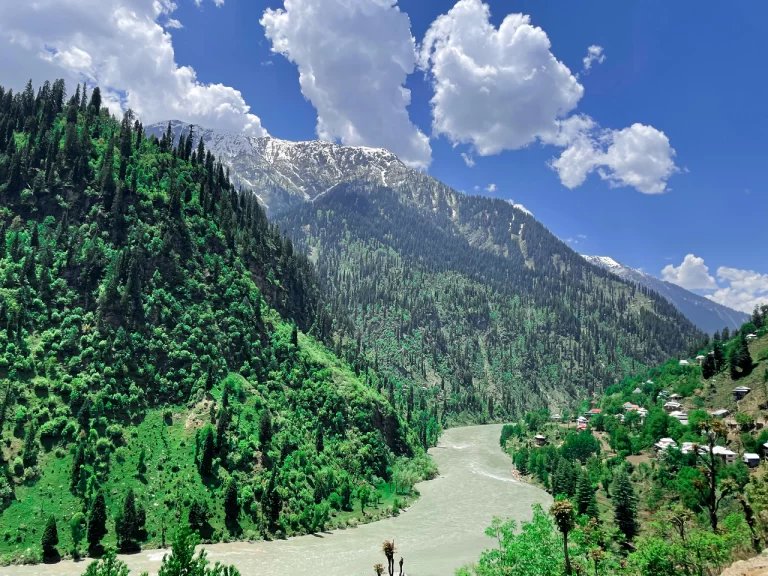Vietnam is a country that is known for its stunning landscapes. Apart from that, its vibrant culture and rich history make it one of the most loving spots to visit. Vietnam offers you a diverse array of experiences for every traveler. These experiences involve – the bustling streets of Hanoi & Ho Chi Minh City, the serene beauty of Ha Long Bay, and the terraced rice fields of Sapa.
The unique charm of the country lies in its blend of ancient traditions and modern dynamism. One of the interesting parts is that its friendly locals, delicious cuisine, and a myriad of natural wonders enables it to head the list of the worth visiting spots.
Do you know the key reason why Vietnam has spread its wings as a top-notch tourist destination? Well, it is all because of its year-round appeal. However, the best time to visit Vietnam totally varies entirely depending on the region. The northern regions are best visited in spring (March to April) and autumn (September to November) for awesome weather. Genuinely, central Vietnam is the most enjoyable from February to May. In addition to this, the south shines brightest from December to April.
Are you willing to explore historical landmarks? Do you want to trek through lush mountains? Have you been longing for the relaxation on pristine beaches? If so, Vietnam offers something for everyone. Honestly speaking, its rich cultural heritage, stunning scenery, and affordable travel options, make Vietnam an irresistible destination for tourists. Whether you are seeking adventure and tranquility, Vietnam is the most preferable place.
Let’s have an all-seeing eye into this blog post, so that you can be familiar with the best time to visit Vietnam.
When to Go to Vietnam
The diverse climate of Vietnam means that the best time to pay a brief visit can vary on the basis of the part of the country you are planning to explore. Here is a complete breakdown of the perfect time to visit different regions in Vietnam –
1. Northern Vietnam (Hanoi, Ha Long Bay, Sapa):
Best Time:
March to April and September to November
Explanation:
During this time, the weather in northern vietnam is mild and pleasant. Here the temperature ranges from 15°C to 28°C (59°F to 82°F). In these months, you can enjoy the ideal weather so that you can explore the cultural heart of the country. In summers, the weather can be hot and humid. It often brings heavy rains. But on the other hand, winters can be quite cold, especially in the mountain areas.
2. Central Vietnam (Hue, Da Nang, Hoi An):
Best Time:
February to May
Explanation:
To be honest, central Vietnam boasts a warm and relatively dry climate. During this time, the range of the temperature is - 21°C to 30°C (70°F to 86°F). The interesting thing is that at this time there is very low humidity and minimal rainfall as well. So, it is confirmed that this is the perfect time to explore Hue, Da Nang, Hoi An. you should try to avoid exploring these regions when you may have to experience heavy rainfall and typhoons.
3. Southern Vietnam (Ho Chi Minh City, Mekong Delta, Phu Quoc):
Best Time:
December to April
Explanation:
This region enjoys a tropical climate with a distinct dry season. This time, the range of the temperature is from - 25°C to 35°C (77°F to 95°F), and there is an abundance of sunshine. It’s the time when you can explore the bustling streets, take a boat tour, relax on the beautiful beaches, and more. The rainy season can bring heavy showers, specifically in the afternoons. But the saddest part is that it can disrupt travel plans completely.
4. Monsoon Seasons to Avoid:
Northern Monsoon:
May to August
Explanation:
In Northern Vietnam you may have to experience the rainy season, lush & green landscapes, and typhoons that can spoil your plan.
Central Monsoon:
September to November
Explanation:
In this region, you will see the heaviest rainfall, storms, floods, and more.
Southern Monsoon:
May to November
Explanation:
Well, in the southern region you may have to experience regular but short-fleeting afternoon showers. Here travel is possible but the humidity can be high.
5. Festivals and Cultural Events:
Best Time:
Lunar New Year (Tet Festival)
Explanation:
It is undoubtedly one of the most culturally rich times to visit Vietnam. Usually, it falls, when the country comes alive with vibrant celebrations. It includes - fireworks, traditional performances, and special foods.
6. For Beach Lovers:
Best Time:
March to May and October to December
Explanation:
Is your main motive is to enjoy the beautiful beaches of Vietnam? Well, its coastal regions surely offer you warm and sunny weather accompanied by calm seas that are ideal for swimming, snorkeling, and a few more water activities.
7. For Adventure Seekers:
Best Time:
September to November
Explanation:
Autumn is no doubt a fantastic time for those who are looking to trek as well as explore the natural beauty of Vietnam. The northern regions are stunning during these months because this time, the temperature is cool and the rice terraces are colorful. No doubt, it is the perfect time for hiking, motorbike tours, and a few more outdoor adventures.
When to Avoid Visiting Vietnam
While Vietnam is a beautiful country as it has much to offer. But in certain times of the year, you have to encounter challenges due to extreme weather conditions, high humidity, or heavy tourist traffic. Here are the periods as well as conditions when it will be best to avoid visiting Vietnam.
1. Northern Vietnam (Hanoi, Ha Long Bay, Sapa) - Summer Monsoon:
Time to Avoid:
May to August
Explanation:
It is a must to keep in mind that during the summer months, northern Vietnam experiences its monsoon season. Now, you have to confront high humidity, frequent heavy rainfall, and occasional thunderstorms. The rain is totally unpredictable and can be intense. It can often result in flash floods and landslides. Usually, the temperature reaches up to 35 degree celsius that discourages you from performing outdoor activities. This way, you will not be able to enjoy as you want to be.
2. Central Vietnam (Hue, Da Nang, Hoi An) - Typhoon and Rainy Season:
Time to Avoid:
September to November
Explanation:
Particularly, central Vietnam is vulnerable to heavy rainfall, floods, and typhoons. Its cities are more prone to floods that can result in road closures, transportation disruptions, and evacuations. Due to typhoons it becomes too dangerous to travel along the coast or take boat tours. As an outcome, so many outdoor activities can be canceled or restricted as well.
3. Southern Vietnam (Ho Chi Minh City, Mekong Delta, Phu Quoc) - Wet Season:
Time to Avoid:
May to November
Explanation:
In Southern Vietnam, you may have to experience a long wet season. The rain is temporary, but it can lead to flooding in a few urban areas. The high humidity and temperatures can also make the atmosphere sticky and uncomfortable. So, it is clear that the wet season does not hinder travel but it can make it less enjoyable.
4. Lunar New Year (Tet Holiday) - National Holiday Congestion:
Time to Avoid:
Late January to Early February
Explanation:
The Lunar New Year, or Tet, is considered the most significant holiday in Vietnam. During this period, the entire country comes to a standstill for the individuals traveling to their hometowns to spend time with loved ones. One hand it is a fascinating cultural event but on the other hand, it’s also a challenging time for tourists. There are several businesses, restaurants, and tourist sites that have limited hours. Several transportation options like buses, trains, and flights become overcrowded as well as expensive. It’s all because of the mass exodus of locals traveling for the holiday. In addition to this, accommodations can also be difficult to find in many places as they are fully booked in advance.
5. Extreme Heat and Humidity - Hot Season in the South:
Time to Avoid:
April to June
Explanation:
Southern Vietnam experiences extreme heat and high humidity that makes it feel hotter. It can be specifically uncomfortable when there is scorching heat. All these things also affect the enjoyment of beach destinations and spend long periods outdoors.
6. Unpredictable Weather in Coastal Regions - High Winds and Rough Seas::
Time to Avoid:
July to November
Explanation:
Coastal regions of Vietnam experience unpredictable weather. It’s due to high winds and rough seas. This period can lead to - limited water activities. Typhoons during this time can cause - heavy rainfall, strong winds, and storm surges. Ultimately, it makes coastal travel risky. So, it's advisable to avoid these areas during this period.
7. High Tourist Season - Peak Periods:
Time to Avoid:
December to February (in tourist-heavy areas)
Explanation:
No doubt, the winter months are generally considered the best time to visit Vietnam. But they also coincide with the peak tourist season. A few of the popular destinations can also become overcrowded with tourists. It will lead to a great hike in prices for accommodation, tours, and other services. So, you should avoid visiting such less-known locations when you prefer a more peaceful experience.
Conclusion
To be precise, Vietnam is a diverse, year-round travel destination. But it will be worth making a plan to visit with the climate in mind. Various regions experience different weather patterns. But by avoiding these periods, you can confirm a safer and more enjoyable trip. Additionally, you need to be aware of peak tourist seasons and native holidays. It will assist you steer clear of overcrowded spots and probable closures.
Whether you have the desire to seek cultural experiences, beach relaxation, or outdoor adventures, it’s perfect to visit every part of Vietnam. Mindful planning around these factors will help you enhance your experience of the stunning landscapes of the country. Besides, you can also have an extreme level of fun with its rich culture and vibrant cities.




